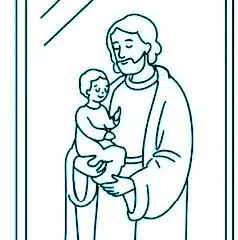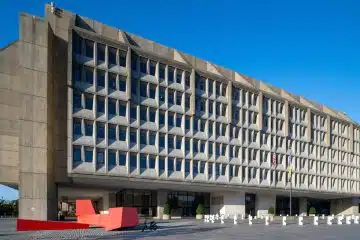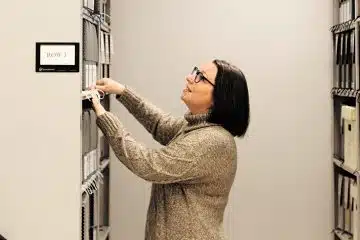U.S. Catholic school growth slows after two years of notable increases, data show
St. Louis, Mo., Feb 10, 2023 / 11:55 am
Following two straight years of notable growth, Catholic school enrollment rose again slightly nationwide in 2022-3023, according to new data made public Monday by the National Catholic Educational Association (NCEA).
The NCEA, which gathers statistics on Catholic school enrollment in the United States each year, reported that Catholic school enrollment grew by 0.3% last year to a total of 1,693,493 students in 5,920 schools. However, Catholic school enrollment remains below pre-pandemic levels.
The increase for the 2022-2023 school year is small but follows a trend of several years of growth that began after the start of the COVID-19 pandemic. Enrollment dropped sharply in the early stages of the pandemic, falling 6.4% from 2019-2020 to 2020-2021 — the largest decline in the 50 years since the NCEA started collecting enrollment data.
The numbers rebounded in the 2021-2022 school year, reaching record levels in some dioceses. Nationwide, Catholic enrollment jumped from 1.63 million to 1.69 million, an increase of more than 3.5%, the NCEA reported. Though the statistics show that enrollment has not yet reached pre-pandemic levels — 1.74 million students enrolled in 2019 — the reversal is notable, as before the pandemic enrollment was trending down by 2% to 3% annually.
A deeper analysis of the numbers suggests the trend of growth may continue, NCEA said. Pre-kindergarten enrollment is up by 1% compared with before the pandemic, which NCEA said is a predictor of future Catholic school growth.
“In every region except the Mideast and Great Lakes, early childhood enrollment increased from 2019-2020 to 2022-2023 school years. This growth is a positive sign of the long-term viability of Catholic schools should they retain these students in kindergarten and beyond.”
In addition, Catholic schools across the country retained 82% of principals and 86% of teachers this year, NCEA said.
“The relatively high retention amidst the added pressure of the nationwide educator shortage indicates Catholic school teachers and principals feel supported in their roles,” the report stated.
More than 100 school closures and mergers took place during the pandemic, most of them elementary schools. Despite that time of difficulty, NCEA’s data shows that the number of school closures and mergers has gone back down, even to below-typical levels.
“Excluding the immediate aftermath of the COVID-19 pandemic, on average, approximately 100 Catholic schools close or consolidate each year. At the end of the 2021-2022 school year, 44 Catholic schools closed or merged … The current positive trend in Catholic school enrollment may enable a continued trend of fewer school closures or mergers,” NCEA reported.
School choice
Polling by CNA’s parent organization, EWTN, shows that Catholic parents largely back initiatives to support school choice, with two-thirds of Catholic parents surveyed last year saying they support a policy that allows students to make use of public education funds for the schools or services that best fit their needs.
The data from NCEA this week showed that overall, 10.5% of Catholic school students use a parental choice program and 27.6% of Catholic schools enrolled students using parental choice programs. In some states, such as Arizona and Indiana, nearly all of the state’s Catholic schools take part in school choice programs.
“Expansion of parental choice programs has long been viewed as a way to support parents as the primary educators of their children. Thirty-two states and the District of Columbia offer school choice programs, all of which vary in terms of their funding mechanisms and criterion,” the NCEA reported.
“Iowa and Utah, both of which already had programs, recently expanded school choice to include more families across the states. Catholic schools should work together to support expansion of parental choice programs across the nation,” the report continued.
Arizona’s steady expansion of these benefits culminated in a universal K–12 school voucher program that took effect last fall. Under the program, all of the state’s 1.1 million schoolchildren will have access to an Empowerment Scholarship Account (ESA) that provides approximately $7,000 per child that families can use for tutoring, private school tuition, at-home curricula, special-needs therapies, and other education expenses.
Reasons for the increase?
Dissatisfaction with several aspects of public education may help explain why Catholic schools are enjoying an increase in enrollment nationwide.
The EWTN News/RealClear Opinion Research poll last fall found that 74% of Catholic voters are concerned about children suffering from an educational “COVID deficit” caused by the shift to online learning during the pandemic. Seventeen percent said they were not concerned and 10% said they were not sure.
EWTN’s polling also revealed concerns among Catholics about the quality and content of education at public schools. Nearly 47% of respondents with children in public school said they have considered, in the past year, moving their children from a public school to a private or parochial school because of concerns about the quality of the education received.
Several educators CNA spoke with cited Catholic schools’ emphasis on a quick return to in-person learning during the COVID shutdown, the high quality and Christ-centeredness of the education provided, and an emphasis on partnering with parents in the education of their children as contributing factors in parents’ decisions to switch from public schools since the pandemic.













